Exploring Cherries: History, Cultivation, Culinary Uses, and Health Benefits
Introduction
Cherries, beloved for their vibrant colors and sweet-tart flavor, are iconic fruits enjoyed worldwide. Botanically classified under the genus Prunus, cherries belong to the Rosaceae family and encompass several species, each with its own unique characteristics. This article delves into the rich history, global cultivation practices, nutritional benefits, culinary uses, and varieties of cherries.
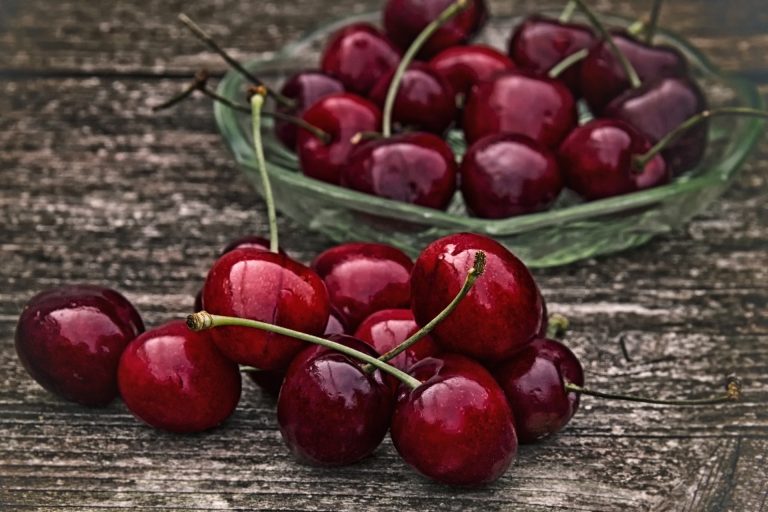
Historical Significance and Origins
Cherries have a long and storied history dating back thousands of years. The wild cherry species, Prunus avium, is native to Europe, Western Asia, and North Africa, while the sour cherry species, Prunus cerasus, originated in regions around the Caspian and Black Seas.
Ancient Greeks and Romans were among the first to cultivate cherries, appreciating both the sweet varieties for fresh consumption and the sour varieties for cooking and preservation. Cherries spread throughout Europe and Asia Minor during Roman times, with different cultivars emerging over centuries of selective breeding.
Botanical Characteristics and Cultivation
Cherry trees are deciduous and typically grow to heights of 4 to 10 meters, depending on the species and variety. They have lanceolate leaves and produce fragrant white or pink blossoms in spring, which develop into fruits by early summer. Cherries vary in color from bright red to dark purple, with flesh ranging from sweet to tart depending on the type.
Cultivation of cherries requires temperate climates with well-drained soil and adequate sunlight. The trees are propagated through grafting onto rootstock and are typically grown in orchards for commercial production. Pruning and pest management are essential practices to ensure tree health and optimize fruit yield.
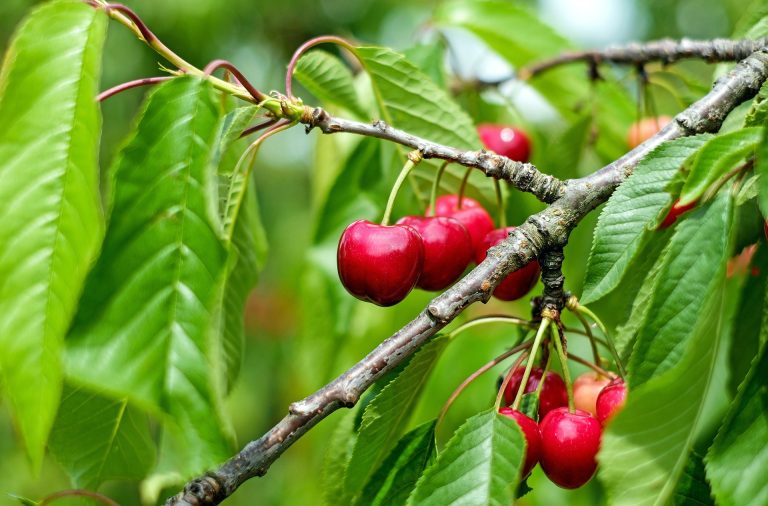
Varieties of Cherries
Cherries are broadly categorized into two main types based on taste and usage:
- Sweet Cherries (Prunus avium): These cherries are larger, plumper, and sweeter than sour cherries. They are enjoyed fresh as a snack or dessert fruit and are also used in culinary applications such as pies, tarts, and preserves.
- Popular Varieties: Bing, Rainier, Black Tartarian, and Stella are among the well-known sweet cherry cultivars.
- Sour Cherries (Prunus cerasus): Also known as tart cherries, these cherries are smaller and firmer with a more acidic taste. They are commonly used in cooking and baking for their robust flavor and are also processed into juice, jams, and dried cherries.
- Popular Varieties: Montmorency and Morello are prominent sour cherry cultivars prized for their tartness and culinary versatility.
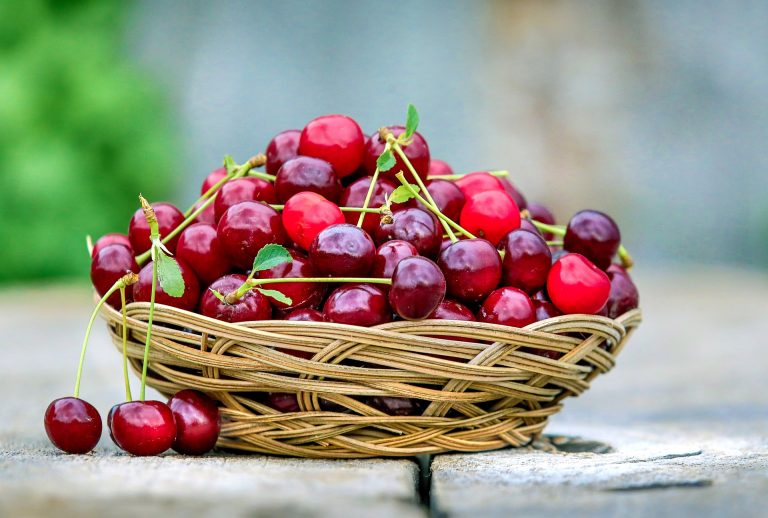
Nutritional Value and Health Benefits
Cherries are not only delicious but also packed with essential nutrients and health-promoting compounds:
- Antioxidants: Cherries are rich in antioxidants such as anthocyanins and flavonoids, which help protect cells from oxidative stress and inflammation.
- Vitamins and Minerals: They are a good source of vitamin C, potassium, and fiber, contributing to immune function, heart health, and digestive health.
- Anti-inflammatory Properties: Compounds in cherries may help reduce inflammation and alleviate symptoms of conditions such as arthritis and gout.
Regular consumption of cherries, especially tart cherries or their juice, has been associated with potential benefits for sleep quality, exercise recovery, and overall well-being.
Culinary Uses and Recipes
Cherries are versatile in the kitchen and lend themselves to a wide range of culinary applications:
- Fresh Consumption: Enjoying cherries fresh as a snack or dessert fruit, either on their own or paired with cheese and nuts.
- Baking and Desserts: Using cherries in pies, cobblers, clafoutis, and cakes for their vibrant color and sweet-tart flavor.
- Preserves and Condiments: Making cherry jams, jellies, sauces, and syrups to preserve their flavor for year-round enjoyment.
Cherries are also used in savory dishes such as salads, sauces for meats, and as a garnish for savory appetizers.
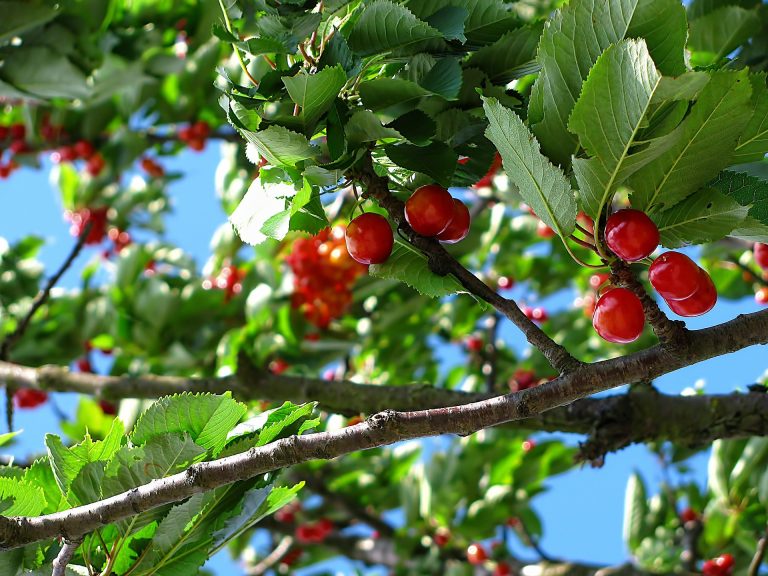
Global Production and Economic Importance
Cherries are commercially grown in temperate regions worldwide, with major producers including the United States (particularly in states like Washington, Oregon, and Michigan), Turkey, Spain, and Italy. The fruit is harvested during the summer months, with peak seasons varying by region and variety.
Fresh cherries are sold in markets both locally and internationally, while processed cherry products such as dried cherries, cherry juice, and cherry-based beverages are popular year-round. Cherries contribute significantly to local economies through agriculture, processing industries, and tourism related to cherry festivals and orchard tours.
Challenges in Cherry Cultivation
Cherry cultivation faces several challenges, including:
- Weather Variability: Frost, hailstorms, and excessive rainfall can damage blossoms and reduce fruit yield.
- Pests and Diseases: Cherries are susceptible to pests such as cherry fruit flies and diseases like brown rot and powdery mildew, requiring integrated pest management strategies.
- Labor Intensity: Harvesting cherries is labor-intensive, as the fruits must be picked at optimal ripeness to ensure quality and shelf life.
Growers employ advanced techniques such as netting for bird protection, irrigation systems, and selective breeding of disease-resistant varieties to overcome these challenges sustainably.
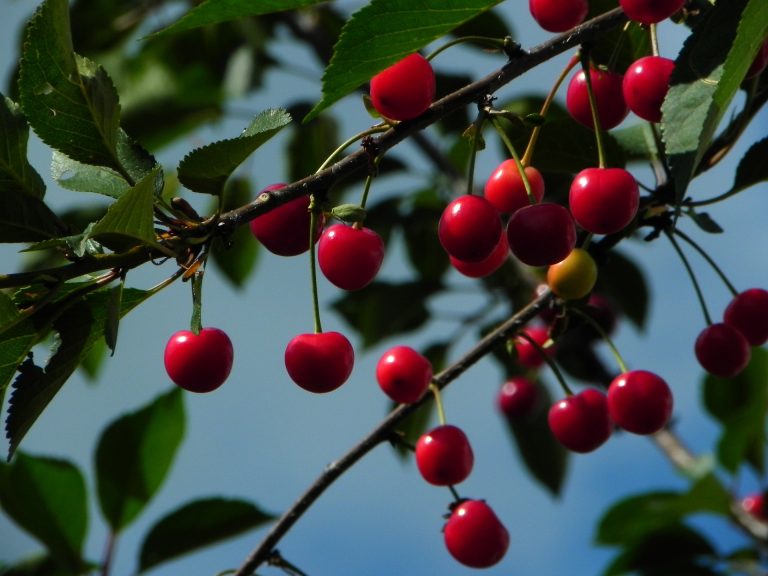
Cultural Significance and Symbolism
Cherries hold cultural significance in various traditions and societies around the world:
- Festivals: Cherry blossom festivals, such as those in Japan and Washington, D.C., celebrate the beauty and cultural significance of cherry blossoms.
- Symbolism: In many cultures, cherries symbolize fertility, abundance, and the fleeting nature of life, as seen in literature, art, and folklore.
- Culinary Traditions: Cherries feature prominently in traditional cuisines, from cherry pies in American culture to cherry liqueurs in European traditions.
Conclusion
In conclusion, cherries are more than just a delicious fruit—they embody a rich tapestry of history, cultural significance, and culinary versatility. From their ancient origins to modern-day cultivation and global popularity, cherries continue to captivate with their vibrant colors, sweet-tart flavor, and nutritional benefits.
As consumer interest in healthy and natural foods grows, cherries stand out for their nutrient density and potential health-promoting properties. Whether enjoyed fresh, dried, or incorporated into a favorite recipe, cherries offer a taste of seasonal abundance and culinary creativity.
In exploring the journey of cherries—from their historical roots to their global cultivation and culinary uses—we gain a deeper appreciation for their enduring appeal and their role in shaping our culinary traditions and cultural heritage.This article provides a comprehensive exploration of cherries, touching on their history, cultivation, nutritional benefits, culinary uses, and cultural significance. It aims to showcase the fruit’s versatility and appeal in global markets while highlighting its importance in agriculture, culinary arts, and cultural traditions.

